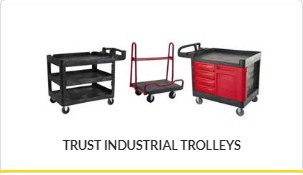Efficient material handling not only ensures smooth workflow but also contributes significantly to reducing costs and enhancing overall profitability.In this comprehensive guide, we will explore the importance of material handling equipment in improving productivity and provide actionable strategies for maximizing efficiency in your operations.
Material handling equipment encompasses a wide range of tools and machinery designed to facilitate the movement, storage, and control of materials within a facility. From forklifts and conveyors to pallet jacks and automated systems, the right equipment from equip2go.com.au can streamline processes and minimize the risk of errors and delays.
Key benefits of material handling equipment
Here are some key benefits of investing in high-quality material handling equipment:
- Increased Efficiency: By automating repetitive tasks and streamlining workflows, material handling equipment enables workers to focus on more value-added activities, thereby boosting overall productivity.
- Enhanced Safety: Modern material handling equipment is designed with advanced safety features to minimize the risk of workplace accidents and injuries, creating a safer working environment for employees.
- Optimized Space Utilization: Efficient storage solutions such as racks, shelving systems, and mezzanines help maximize available space, allowing businesses to store more inventory without expanding their footprint.
- Reduced Labor Costs: Automation and mechanization reduce the need for manual labor, leading to significant cost savings over time and allowing businesses to allocate resources more efficiently.
Strategies for Improving Productivity
Now that we understand the importance of material handling equipment let’s delve into some practical strategies for optimizing productivity:
Invest in the Right Equipment: Conduct a thorough assessment of your operations to identify areas where material handling processes can be improved. Invest in equipment that aligns with your specific needs and goals, whether it’s forklifts for heavy lifting, conveyor systems for automated transportation, or robotic palletizers for efficient packing and stacking.
Implement manufacturing Principles: Adopting manufacturing principles can help eliminate waste and streamline processes throughout your facility. Implement techniques to organize workspaces and optimize material flow, ultimately improving productivity and efficiency.
Utilize Technology: Leverage technology to enhance the capabilities of your material handling equipment. Implement warehouse management systems (WMS) and inventory tracking software to monitor stock levels, track shipments, and optimize order fulfillment processes in real-time. Integration with IoT devices and sensors can provide valuable insights into equipment performance and maintenance needs, enabling proactive maintenance to minimize downtime.
Provide Training and Education: Proper training is essential to ensure that employees can operate material handling equipment safely and efficiently. Invest in comprehensive training programs to familiarize workers with equipment operation, safety protocols, and best practices for optimizing productivity. Regular refresher courses can help reinforce learning and keep employees up-to-date with the latest advancements in technology and processes.
Optimize Layout and Workflow: Design an efficient layout that minimizes unnecessary movement and maximizes the flow of materials throughout your facility. Implement techniques such as cross-docking to reduce handling times and eliminate unnecessary storage, and prioritize items based on demand to minimize travel distances and improve picking efficiency.
Regular Maintenance and Inspections: Schedule regular maintenance and inspections to ensure that material handling equipment remains in optimal condition. Addressing minor issues promptly can prevent costly breakdowns and downtime, ensuring uninterrupted operations and maximizing productivity.
Conclusion
In conclusion, material handling equipment plays a crucial role in improving productivity and efficiency across various industries. By investing in the right equipment, implementing best practices, and leveraging technology and automation, businesses can optimize their material handling processes and achieve significant cost savings while maintaining a competitive edge in the market.
By adopting a strategic approach to material handling and embracing a culture of continuous improvement, businesses can unlock new levels of productivity and profitability, positioning themselves for long-term success in an increasingly competitive marketplace.
















